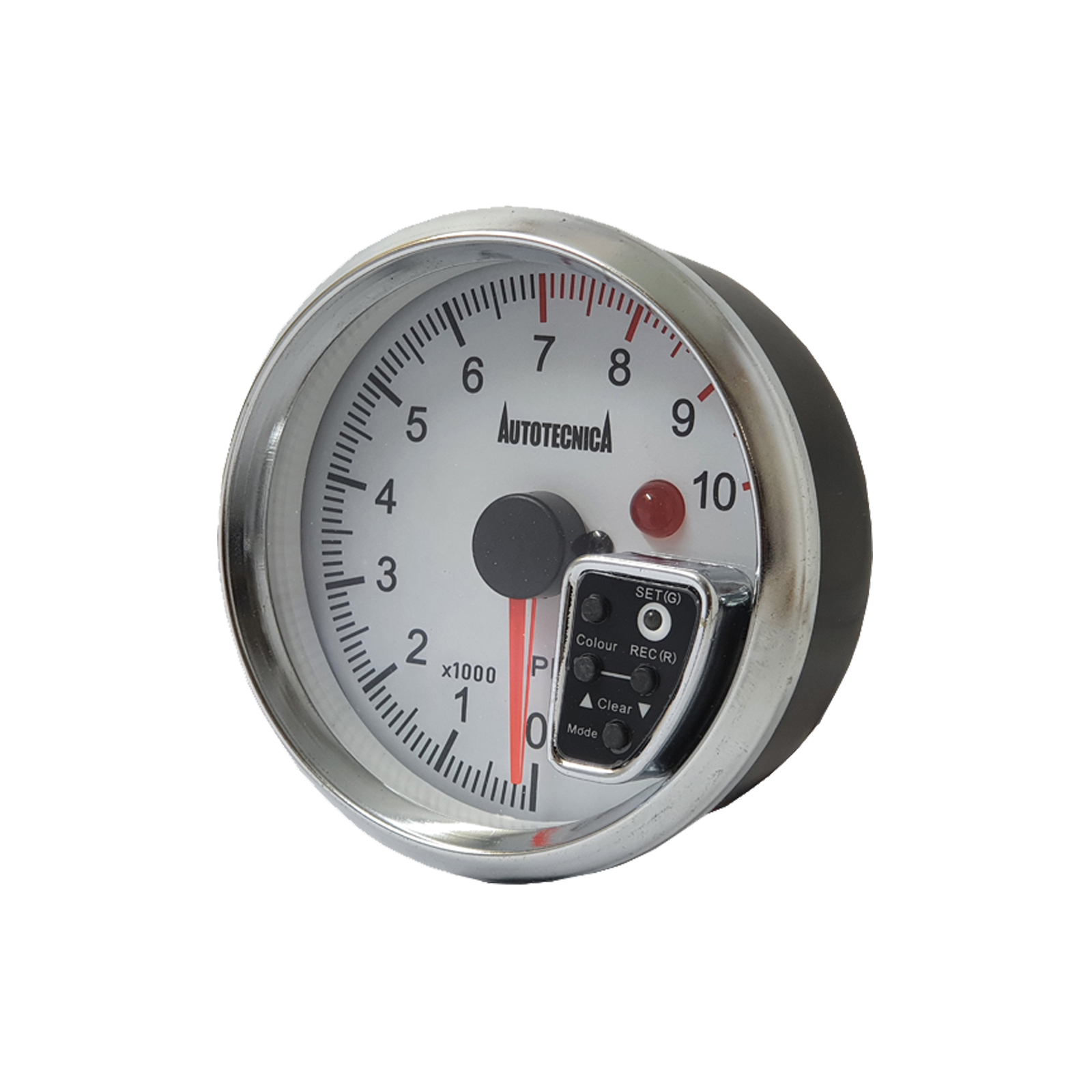Tachometer Basics: Everything You Need to Know for Accurate Readings
Wiki Article
Checking Out the Functions and Advantages of a Tachometer: A Comprehensive Guide for Vehicle Lovers
From providing real-time information on engine speed to assisting in maximizing equipment changes, the tachometer offers as even more than just a dial on the control panel. Its diverse features not only boost driving experience but additionally play a critical function in keeping engine health and performance.Recognizing the Fundamentals of a Tachometer
In the world of automotive instrumentation, comprehending the essentials of a tachometer is necessary for any type of auto enthusiast looking to dive into the details of engine performance tracking. A tachometer, frequently presented on the dashboard of an automobile, measures the engine's transformations per minute (RPM) This important tool gives real-time data on just how fast the engine crankshaft is revolving. By keeping an eye on the RPM, drivers can ensure they are operating within the optimal variety to make best use of performance and effectiveness.Tachometers commonly have actually a range noted in transformations per min, with a redline showing the optimum speed at which the engine can safely run (tachometer). This details is important for stopping engine damages and optimizing equipment shifting for manual transmissions. In addition, tachometers can help in detecting engine concerns such as misfires or a falling short ignition system by detecting uneven RPM readings
Relevance of Keeping An Eye On Engine Rate

Keeping an eye on engine speed is an essential aspect of car maintenance and performance optimization for automotive fanatics and experts alike. The engine speed, gauged in transformations per min (RPM), suggests just how fast the engine's crankshaft is rotating. By keeping a close eye on the RPM, motorists can make sure that the engine is operating within the optimum variety, avoiding potential damage from over-revving or stalling. Keeping an eye on engine rate is especially critical during gear shifts, as it helps drivers determine the right time to transform gears for smooth velocity and efficient gas consumption.
In addition, tracking engine speed can additionally give important understandings right into the total wellness of the lorry. On the whole, monitoring engine rate with a tachometer is a basic technique that can boost driving efficiency, extend engine life, and make sure a much safer and much more pleasurable driving experience.
Enhancing Performance Through Equipment Shifts
Maximizing efficiency with tactical equipment changes is a crucial element of making best use of a lorry's effectiveness and power outcome. Proper equipment moving guarantees that the engine operates within its optimum power band, enabling smooth acceleration and boosted fuel economy. When changing equipments, it is important to take notice of the engine rate suggested on the tachometer. By monitoring the engine changes per minute (RPM), drivers can establish the most opportune minutes to upshift or downshift for optimal efficiency.
To attain peak efficiency through gear shifts, chauffeurs should practice smooth and prompt transitions between gears, matching engine rate with roadway rate to harness the complete possibility of their vehicle's powertrain.
Optimizing Performance With a Tachometer
Understanding the art of equipment shifting in high-performance vehicles not only enhances driving experience but also plays an important function in optimizing performance with a tachometer. tachometer. By paying attention to the tachometer analyses, vehicle drivers can maximize their equipment shifts to operate within the engine's most efficient range. When accelerating, moving gears at the best RPM indicated by the tachometer can prevent the engine from overworking or underperforming, leading to boosted gas effectiveness and general performanceAdditionally, a tachometer helps vehicle drivers stay clear of unnecessary revving, which not only wastes gas yet also places unneeded strain on the engine. Regularly keeping an eye on the tachometer while driving allows for smoother equipment shifts, minimizing damage on the transmission system gradually.

Advanced Tips for Tachometer Utilization
To dig into advanced suggestions for tachometer usage, take into consideration integrating the usage of change lights. Change lights are aesthetic indicators that click this link brighten when it's time to shift gears based on engine changes per minute (RPM), enabling for smooth gear modifications without constantly monitoring the tachometer. By fine-tuning shift points and setting cautioning limits, vehicle drivers can enhance velocity and engine performance while minimizing the danger of over-revving.Conclusion
To conclude, the tachometer serves as a critical device for auto enthusiasts to keep an eye on engine rate, boost efficiency through gear changes, and make the most of efficiency. By recognizing the functions and advantages of a tachometer, motorists can enhance their driving experience and lengthen the life read this post here expectancy of their vehicle. Making use of sophisticated tips for tachometer use can even more boost driving skills and total performance on the road.Report this wiki page